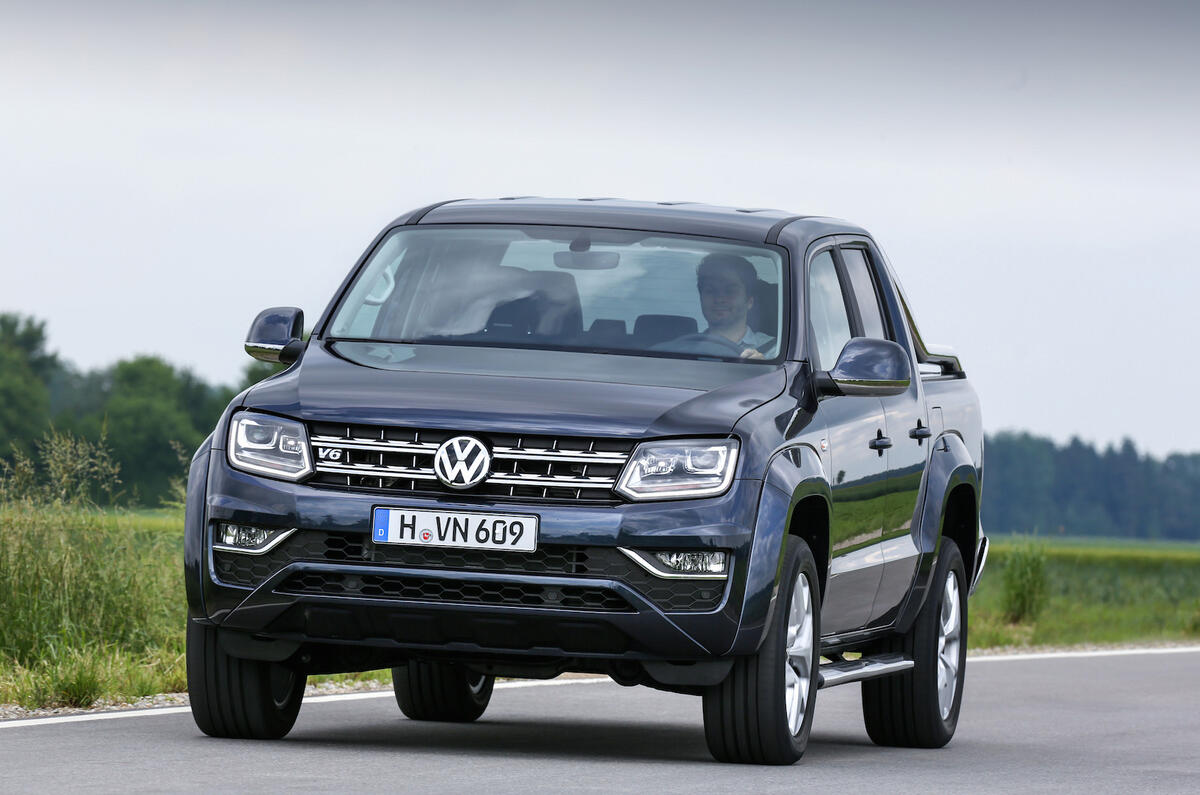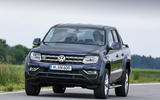What is it?
The new Volkswagen Amarok could represent something more than just a facelift for this particular double-cab pick-up, which was launched in 2009 (doesn’t seem that long ago, does it?). It could mark a continued shift in the pick-up market.
Volkswagen’s pick-up has been pinching some sales from large SUVs and 4x4s and, unusually, Amarok is sold mostly in its highest specification. Eight out of 10 Amaroks flogged in the UK are in top-level trim.
It is, for want of a better analogy, the premium double-cab pick-up. And just as car makers have discovered that ever more expensive SUVs will sell, so VW has opted to capitalise on the fact that some customers are after a classier pick-up. For people who use pick-ups for pleasure as much as work, the badge and the quality of the trim matter.
This is happening at a rather lower price point than the SUV market, of course. We’re not talking about a Bentley Bentayga here. The facelifted Amarok will still have a one-tonne-plus payload, which brings commercial vehicle tax breaks, when order books open in September prior to the start of deliveries at the end of the year.
Significantly, it does arrive with a new engine, and in a world of downsizing, it’s curious to note that it’s a bigger, more powerful one of 3.0 litres and six cylinders, making 221bhp, rather than the 161bhp four-pot unit of old. Partly it’s because customers told VW they’d like more power; partly it’s because the new engine will give the Amarok a towing limit of up to 3.5 tonnes; partly it’s because customers have been asking for something more refined and classy.
Given that the Amarok was first in line when VW’s cheat-software emissions recalls began, perhaps partly the 2.0-litre engine was being asked to work harder than it was comfortable with in the first place, too. Certainly, at what is likely to be 199g/km and 37.1mpg on the combined fuel economy cycle, the more capable 3.0 is claimed to be less thirsty than the old model.
At launch, the Amarok will offer only this top-spec 3.0-litre engine, driving through a permanent four-wheel drive system and eight-speed automatic gearbox. Later, 161bhp and 201bhp models, manual gearboxes and part-time four-wheel drive or rear-wheel drive will supplement that.
Other changes to the Amarok include a new dashboard, to improve interior ambience, and the fitment of more luxury car features. But on the outside, not so much is different; what was the most distinctive pick-up stays that way, with some bumper amendments. Dimensions, then, are unchanged at 5.25m long and 2.23m wide, including mirrors.






















Join the debate
Add your comment
More of these please
Amarok
£35,000 for a pickup?
And it's not even based on a Golf.
Can we have a 5 star review of a Caddy next please - that would tick
all the boxes.
How much exactly are VW paying you for these "reviews"????
dickieb wrote: 4 star car?
Obviously less than Ford are shelling out given that reviews of that manufacturer's cars offer equivalent negative criticism to the company's own advertising copy.
Make a smaller one
Autocar wrote: Whether the
The Japanese alternatives have reliability on their side.